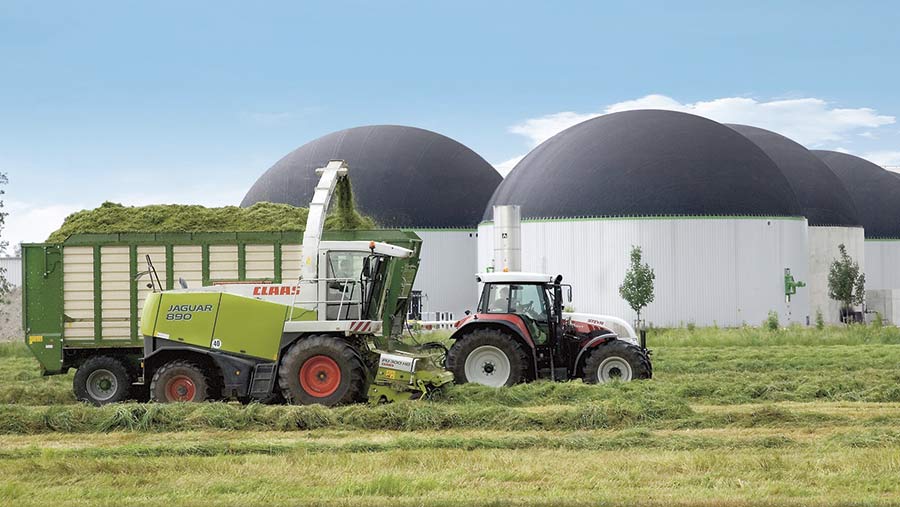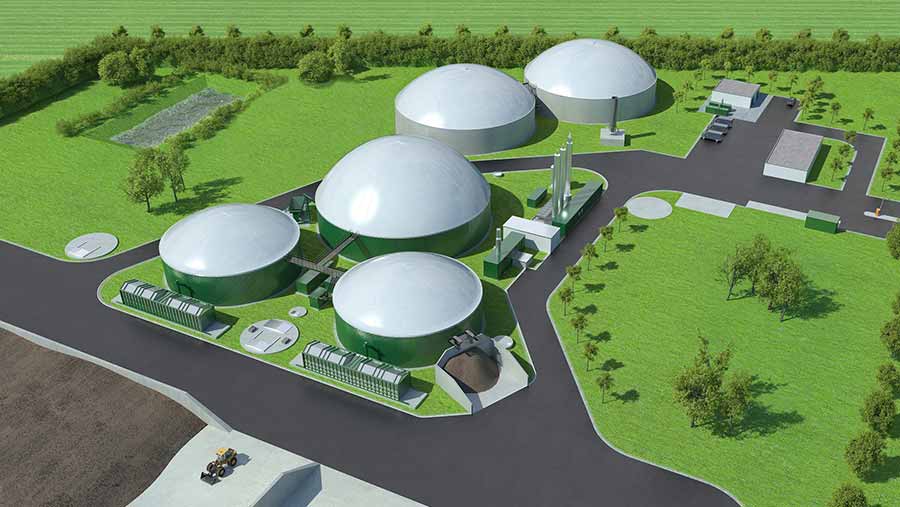Grass-to-gas farmers could meet UK renewable goals

Thousands of farms and millions of acres of grassland could help the UK match its renewable heating targets, according to a new report.
Energy supplier Ecotricity has called for a big push in farm-based anaerobic digestion, which turns grass silage into cleaned-up biomethane for the gas grid.
The Green Gas report suggests 1,000 plants, each with 5MW capacity, could plug the deficit in the government’s goal of 12% of heating coming from renewables by 2020.
See also: Farmers wanted for gas to grid projects
Each plant, which Ecotricity calls a “green gas mill”, would draw on about 1,000ha of grassland and lead to £3m/year in feedstock contracts for nearby farmers.
That means 1,000 sites could need 1m hectares – just under one-tenth of the UK’s temporary and permanent grassland – and earn supplying farmers £3bn.
The report has another, more dramatic, target: 5,000 mills could heat 97% of British homes by 2035.
Better soil health
It claims farm production would not suffer, as soil health would improve from crop rotations, marginal land would be brought into use and the process would turn out organic fertiliser as a by-product.
Ecotricity is pitching grass-based AD as a substitute for using energy crops and food waste, as well as new fossil fuels such as obtained by fracking.
“Through our research, we have found that using grass is a better alternative, and has none of the drawbacks of energy crops, food waste or fracking – in fact, it has no drawbacks at all,” Ecotricity founder Dale Vince said.
Ecotricity has just received planning permission for its first green gas mill at the land-based Sparsholt College in Hampshire. It will help heat 6,000 homes.
A further five sites, spread from Somerset up to Lancashire, are at different stages of planning, and the company is looking for more farmers and feedstock suppliers.
The farms hosting the plant will receive a long-term rental payment, while Ecotricity will cover all costs, from feasibility through to operation and maintenance.
Grass will be sourced on flexible contracts from within 15km of each plant, and will be clamped at the AD site.
The land it comes from must be marginal, Grade 3 or poorer, in low-grade arable use or under-grazed grassland.

Artist’s impression of a green gas mill
“As long as it’s not competing with food production, green gas like this project can be really helpful in getting the UK on to a cleaner and lower-carbon path,” said Doug Parr, Greenpeace UK chief scientist and policy director.
Significant obstacles
Ecotricity is not the only developer working on these kind of projects. Some 50 AD gas-to-grid plants were running at the end of last year, but significant obstacles remain.
Gas grid connections can be difficult and expensive, so projects must be close to the injection point.
And the government is also considering its response to a consultation on reform of the Renewable Heat Incentive (RHI).
One of the proposed changes for biomethane plants was to limit RHI payments on gas produced from wastes and residues.
